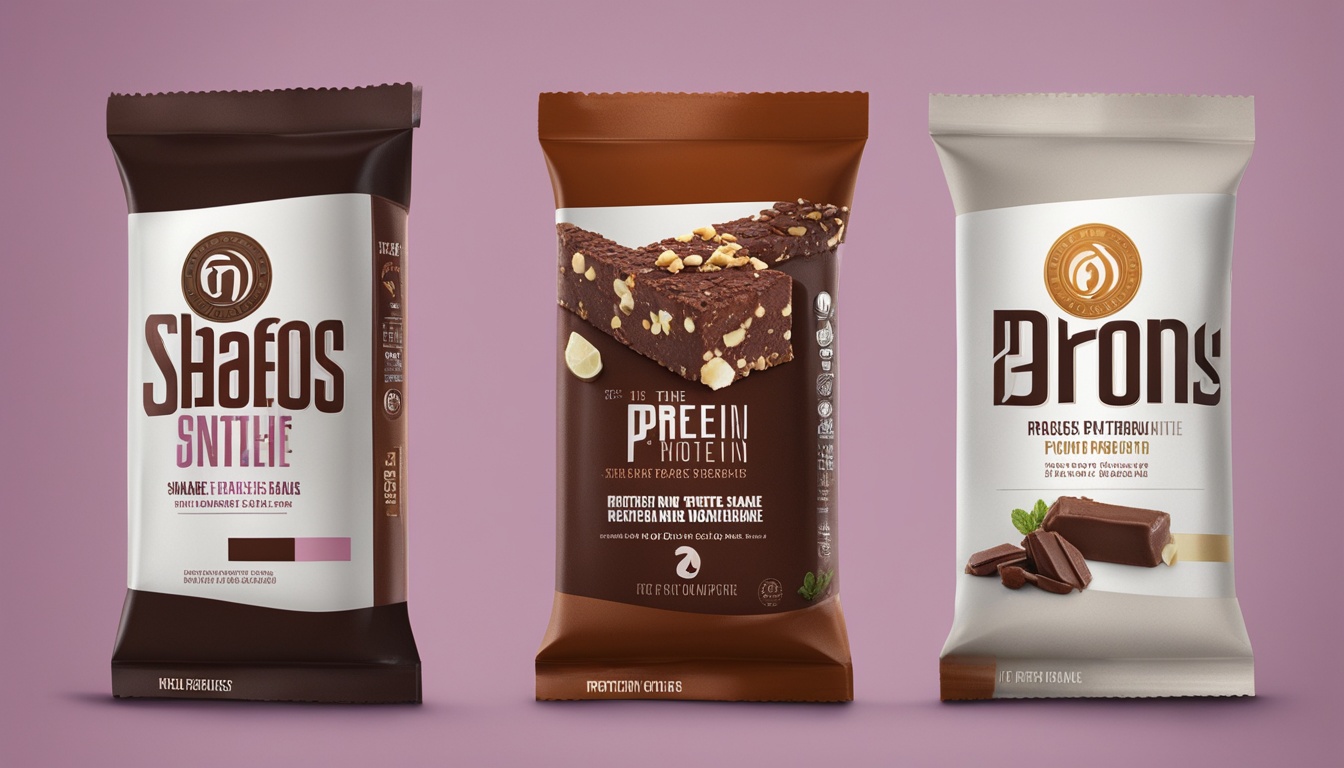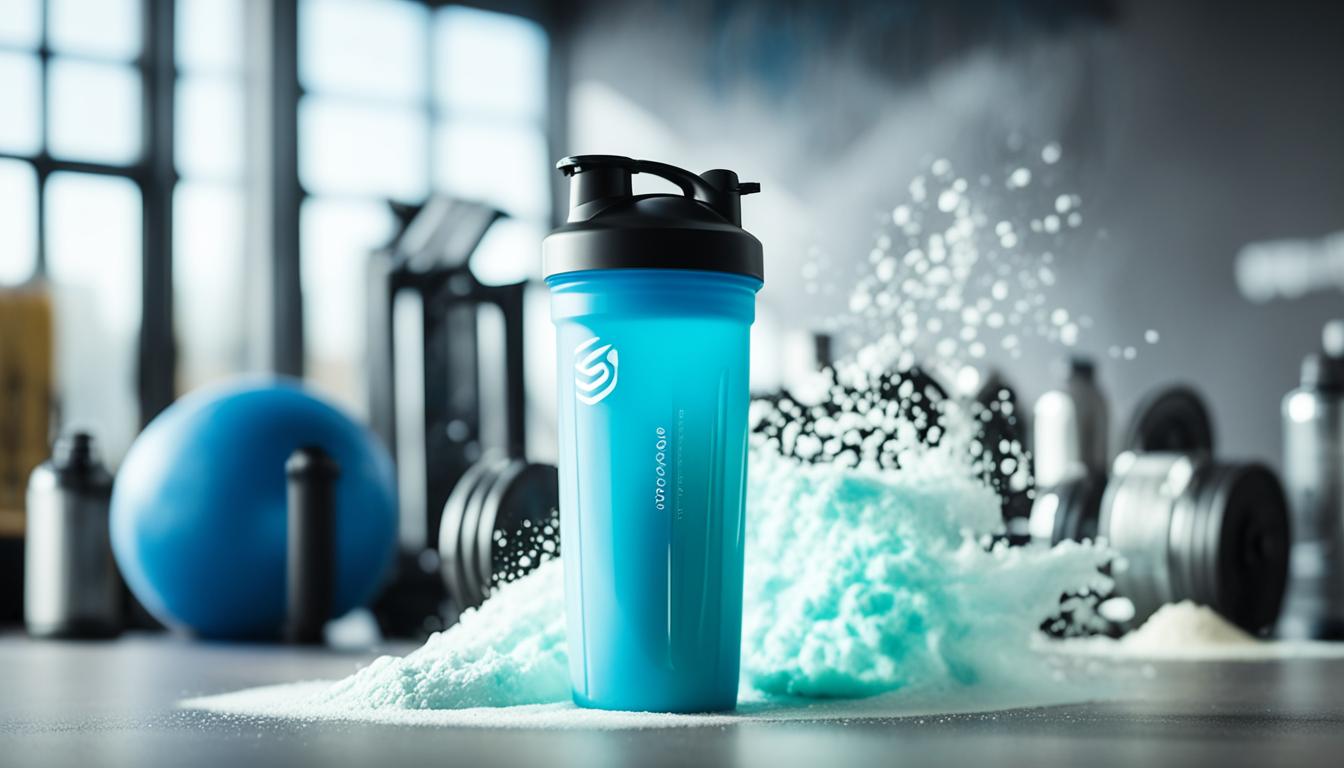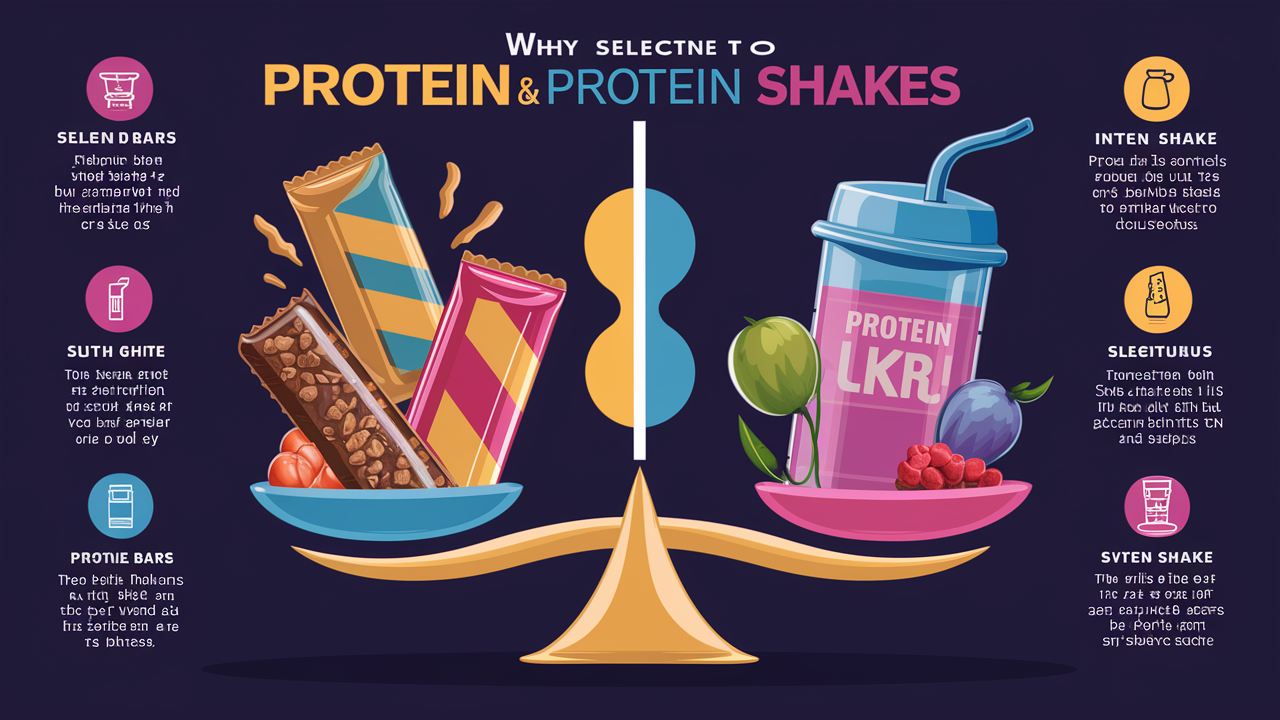Table of Contents
Toggle- Protein Showdown: 7 Compelling Reasons Why Choosing the Right Option – Protein Bars vs. Protein Shakes – Can Transform Your Lifestyle
- FAQ
- Protein Bars vs Protein Shakes: Which Nutrient-Dense Option Fits Your Lifestyle
- 1. Protein Bars vs Protein Shakes: What are the main differences?
- 2. Which is more convenient: Protein bars or shakes?
- 3. Are protein bars or shakes better for muscle building?
- 4. What should I consider when choosing between protein bars and shakes?
- 5. Do all protein bars offer the same benefits as protein shakes?
- Conclusion
Protein Showdown: 7 Compelling Reasons Why Choosing the Right Option – Protein Bars vs. Protein Shakes – Can Transform Your Lifestyle
When you decide between a shake or a bar, enjoy each bite filled with protein. Fitness is a journey. It’s about the choices you make. Cheers to finding the protein that fits you best!

Key Takeaways
- Protein helps repair and grow muscles. Aim for about 0.8 grams of protein for each kilogram you weigh.
- Most protein in cow’s milk comes from casein, a protein that’s slow to digest. Whey protein, which is quick to digest, makes up the rest.
- For those who can’t have dairy, pea and soy protein are great options. They come from plants.
- When picking out bars or shakes, check the ingredients. Look for natural foods, not a lot of sugars, and lots of protein and fiber.
- Both bars and shakes can help your muscles. But, what you choose depends on what works best for you and your life.
Casein Protein
Casein is a type of protein found in milk. It makes up about 80% of the protein in cow’s milk. This protein is known as “slow-digesting.” It turns into a gel in your stomach. Then, it slowly sends amino acids into your blood, helping your muscles for hours.
Casein is like whey protein, offering protein intake and support for your daily needs. When you eat casein, your muscles get a steady flow of amino acids. This helps them recover and stay strong, even when you don’t eat for a while.
| Protein Source | Percentage in Cow’s Milk |
|---|---|
| Casein | 80% |
| Whey | 20% |
Using casein protein with resistance training can boost your muscle size and strength. Casein gives your muscles a steady flow of amino acids. This supports their recovery and growth. It’s great for anyone working out.
“Casein is an excellent choice for providing sustained muscle support, particularly during periods of fasting or overnight.”
If you aim to be a top performer or just stay healthy and active, casein protein is good for you. This protein feeds your muscles slowly. So, they get what they need, even when you’re resting a lot.

Whey Protein
Whey protein comes from milk and makes up 20% of the proteins in cow’s milk. It’s a “quick-digesting” protein. This means it gets into your body fast, boosting your amino acids quickly. After working out, your muscles need amino acids to grow and heal, and whey protein gives them just that. It’s also rich in branched-chain amino acids (BCAAs), which help your muscles make more proteins.
If you take proteins as a drink, they reach your blood faster. Protein bars should have about 10-20 grams of protein in them. This makes whey protein a good pick for people who want a simple, powerful way to back up their fitness aims.
Whey protein is just as good as casein protein, but it works in a different way. It helps anyone looking to up their protein game and get a full set of amino acids. It’s great for athletes, people who love working out, or those wanting to keep fit. Adding whey protein to your meals can do wonders for your health.

Pea Protein
Pea protein comes from yellow peas, making it a great choice for many. This includes vegetarians, vegans, and those who can’t have dairy. It’s full of essential amino acids, especially lysine, the body needs. Pea protein is also easy to digest and doesn’t cause allergies, good for those with sensitive stomachs. Even though it’s not a complete protein like some meats, it’s still very helpful for a healthy diet.
The amount of protein you need every day is about 0.8 grams per kilogram of your weight. Pea protein helps you get this, which is perfect for vegetarians and vegans. Plus, if you work out with weights, pea protein can make you stronger and help your muscles grow more.
Pea protein has lots of amino acids which are great for your body. It has all the essential amino acids, so it’s a full protein. This means it’s good for your protein needs and helps your body get stronger.
For a protein that’s good for the planet, doesn’t have dairy, and is friendly to allergies, choose pea protein. It’s easy to add to your meals too, making it easy to be healthy and fit.
Soy Protein
Soy protein comes from soybeans. It’s special because it has all nine amino acids you need. This makes it a complete source of protein. Studies suggest it might help lower cholesterol and keep your heart healthy. It also has phytoestrogens, which could balance hormones. But be careful if you’re allergic to soy.
In the world of sports nutrition, animal-based protein is big. But soy protein gives a great option for plant lovers. It’s perfect for vegetarians, vegans, and people who can’t have dairy. Soy is rich in amino acids and offers health benefits. This makes it a smart choice for those wanting more protein to better their health.
Even though soy protein is good for you, it’s not always the best choice. When picking a protein, think about what you need and like. It depends on your diet and fitness goals. Talking to a doctor can help you decide if soy protein fits your needs. This way, you can be sure it helps meet your protein and nutrient goals.
Protein Bars
Protein bars are a great choice for busy people. They have many flavors and types, like chewy or crunchy. You can eat them as a snack or to replace a meal. They mix proteins from sources like whey and soy with some carbs and fats for energy.,
Usually, a protein bar has 5–10 grams of fat, 25–35 grams of carbs, and 5–10 grams of fiber. They also have 150–400 calories and 10–20 grams of protein. Some have up to 30 grams of protein. Bars with at least 3 grams of fiber make you feel fuller. Exo protein bars have between 4 – 16 grams of fiber.
But, be careful. Some protein bars are full of sugar and look more like candy. Try to choose bars or shakes with low sugar or without high fructose corn syrup.
Protein bars usually have 10-20 grams of protein. They get their protein from things like nuts and eggs, or from kinds like whey. The number of calories can range widely. Fewer than 200-250 calories is a snack. More than that is like eating a meal.
Considerations and Potential Downsides
Added Sugars and Artificial Ingredients
The market for protein bars is huge. Many brands have all sorts to please people who watch their health. But, not every protein bar is a good pick. Some say they’re good for you, but they’re packed with sugar and bad stuff.
So about the numbers, a general protein bar has 5–10 grams of fat, 25–35 grams of carbs, and 5–10 grams of fiber, with 150–400 calories. They also pack 10–20 grams of protein. Yet, a few can hit 350 calories, which is a lot if you’re watching your weight. They can also use bad sweeteners like high fructose corn syrup. This stuff can lead to liver fat, obesity, and diabetes.
A good tip is checking the ingredients when you buy a protein bar. Look for less sugar and more natural, less processed foods. Read the labels carefully to know what you’re getting. It helps you choose ones that fit your health and fitness plans best.
Considerations and Potential Downsides
Cost and Value
When talking about protein bars, their cost and worth can be quite different. Not all protein bars said to be good for you are actually healthy. Some contain too much sugar and bad stuff. Be careful and always check the label and the ingredients. Go for those that have natural foods and less sugar and fake stuff. Spend a bit of time checking the label. Look for bars with good protein without too much fat and calories. Picking good protein bars is good for staying healthy. Plus, they taste good too.
The cost and worth of protein bars varies greatly. Protein powder can be from $0.42 to $2.90 per ounce, but protein-rich tofu is only about $0.18 per ounce. It’s smart to check how much you’re paying for each bar. This helps you spend your money wisely and fit your protein needs and fitness goals.
Protein bars might not be the best pick for your wallet or health every time. Think about what you really need. Sometimes, adding other protein-rich foods to your meals is better. Try foods like nuts, seeds, cheese, and lean meats. These can be cheaper and healthier.
Protein Shakes
Protein shakes have been key in fitness, known for their ease and fast use. They offer many tastes and types, from ready drinks to mixes for blending at home. Mixing with water or milk makes them simple to enjoy. Plus, you can adjust how much protein you get to fit your needs.
Drinking your protein means your body gets amino acids faster to help fix muscle tissue. After working out, aiming for 0.14-0.23 grams of protein per pound is suggested for muscle fix. Protein shakes are a handy way to get the protein you need after you work out. They help your muscles get better and grow.
Protein bars can keep you full longer, but shakes have fewer calories and are good for watching your weight or staying fit. Shakes or bars, enjoy them and remember, the journey in fitness is about good choices. Here’s to picking the best protein for you!
Protein Bars vs Protein Shakes
Taste and Palatability
When talking about the taste and texture of protein, both bars and shakes have many choices. Bars have lots of flavors, like peanut butter or granola. This makes it easy to find a taste that suits your preferences. Yet, protein shakes come in fewer flavors. The top ones are chocolate, vanilla, and strawberry.
The texture of protein shakes changes with ingredients and how they’re made. Many enjoy the smooth, creamy feel of shakes. But, some like the chewy, hearty feel of bars. In the end, picking between bars and shakes is about what you like best.
Finding a tasty protein is key. Enjoying it can make sure you keep eating or drinking it. This is good for your health and fitness goals. Whether you go for the quick shake or the flexible bar, choose what flavors you like.
Protein Bars vs Protein Shakes
Fitness Goals and Performance
Both protein bars and shakes are great for fitness goals. They help your muscles repair and grow. This is key if you do a lot of exercise or strength training. A protein bar usually has 10-20 grams of protein. Studies show our bodies get amino acids faster from liquids.
After working out, having 0.14-0.23 grams of protein for each pound you weigh is smart. Protein bars and shakes fit this bill well. Your choice between them just depends on what you like and how you live. Checking the calorie count is also crucial. Bars or shakes under 200-250 calories are snacks. Above that, they’re like a meal in a cup.
Both protein bars and shakes can be big helps for your fitness game. They’re good for building muscle, staying strong after workouts, or keeping up your protein levels. Choose what’s best for you, looking for good stuff and the right size portion. That’s how you win at the fitness food game.
FAQ
Protein Bars vs Protein Shakes: Which Nutrient-Dense Option Fits Your Lifestyle
1. Protein Bars vs Protein Shakes: What are the main differences?
Both protein bars and protein shakes are popular choices for increasing protein intake. However, the main difference lies in their form: protein bars are solid and portable, while protein shakes are liquid and convenient for quick consumption.
2. Which is more convenient: Protein bars or shakes?
The choice between protein bars and protein shakes in terms of convenience depends on your lifestyle. If you’re on the go and need a quick protein boost, protein bars are a handy option. On the other hand, protein shakes can be easier to consume post-workout or as a meal replacement.
3. Are protein bars or shakes better for muscle building?
Both protein bars and protein shakes can aid in muscle building due to their high protein content. Whey protein in shakes is quickly absorbed, making it ideal for post-workout recovery, while protein bars can provide sustaining energy throughout the day.
4. What should I consider when choosing between protein bars and shakes?
Factors to consider include your daily protein requirements, body weight goals, and the timing of protein intake. Protein shakes are often preferred for pre or post-workout consumption, while protein bars can be a convenient snack option.
5. Do all protein bars offer the same benefits as protein shakes?
Not all protein bars are created equal. Some may contain higher levels of sugars and additives compared to protein shakes
Conclusion
The choice between protein bars and shakes is up to you and how you live. Some people like shakes because they’re quick and easy to use. Others choose bars for the easy-to-carry snack they make. Try both to see what fits best with your daily life.
When you pick a shake or a bar, you’re giving your body the protein it craves. Many people at the gym love protein bars for their handiness and good nutrients. Meanwhile, protein powders are big among those watching their weight, showing more personal choices in food.
Your decision between bars and shakes depends on what you want for your health, how you eat, and your daily activities. By knowing what each one does, you can choose wisely. Good luck on your journey to better health!
Share via:





June 11, 2024 at 10:48 am[…] your day with breakfast is important. When you choose a meal with lots of fiber, you’re making a smart […]